Development
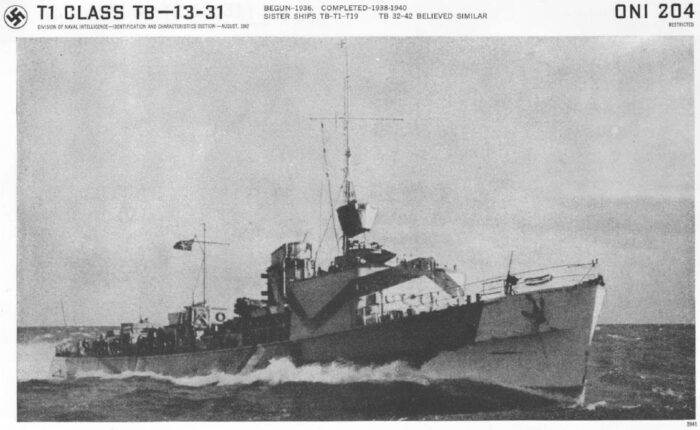
The Type 35 torpedo boat were the first modern German Torpedo Boat type, designed specifically as torpedo boates. Despite being called Type 1935, they were completed a few months after the start of World War II, still training as the Norwegian Campaign started by April–June 1940. Design-wise, German authorities lied when reporting their official tonnage, 600 standard. In reality they displaced 859 long tons (873 t) standard and 1,108 long tons (1,126 t) under deep load, and more in 1944 with AA additions. Very different design compared to the Type 23/24, originally laid down as destroyers and later reclassed, they had no forward artillery, just a single aft gun and two torpedo tubes banks of the larger 53cm or 21-inches caliber instead of 50cm. They were also flush deck, with a large raked bow, to deal with heavy weather and better suited to drop mines, which they possessed aplenty. This design feature proved not enough, many had their bows raised and sharpened, clipper-style. Engineers soon realized that it was impossible to stick to the theoretical 600 tonnes limit after the 1930 London Naval Treaty, it was decided to scrap the clause entirely, helped by the 1935 Anglo-German naval treaty.
Design of the class
Development
These were the first modern Torpedo Boats and back in 1933 when the type was envisioned, it was in the frame of a long-term plan to supplement destroyers, which tonnage was severely restricted before the 1935 treaty with Britain, to 12 replacement vessels. The 1935 treaty made the type now available without restrictions under the Washington Treaty, which now applied ot the Kriegsmarine, and no longer the Versailles treaty. The great advantage of the treaty’s provisions was to allow an unrestricted number of torpedo boats, provided they stuck to a 600 tonnes limit that all Nations were quick to cheat on. Japan was famous notably for its over armed and unstable TBs like the “Tomozuru affair” showed. Italy reclassed all its vintage WWI destroyers into TBs in order to free new tonnage for modern destroyers. Germany was in the same logic.
The plan was to have on the long term, a fleet of destroyers and torpedo boats in a ratio of one for two, the latter being used for convoy and axuliary escort and missions such as minelaying and patrols, whereas the destroyers, too precious, would be exclusively used for fleet escort and actions. Due to this, far more torpedo boats were envisioned as part of Plan Z.
The original ships were developed as some kind of high-endurance Motor Torpedo Boats, sort of scaled up R-Boote, which predetermined requirement of a low outline profile and an extremely unbalanced armament with six torpedo tubes and a single defensive 105mm gun. The latter only elevated to 50° and placed at the stern, for chase defence after a torpedo attack. What really was the attention of muc care was their steam machinery plant, brand new and much more powerful than the previous Type 23/24 ships, using the new overheated Wagner boilers (70atm, 460°C). But their machines would prove really troublesome and plague their career, just as contemporary German destroyers.
Hull and general design
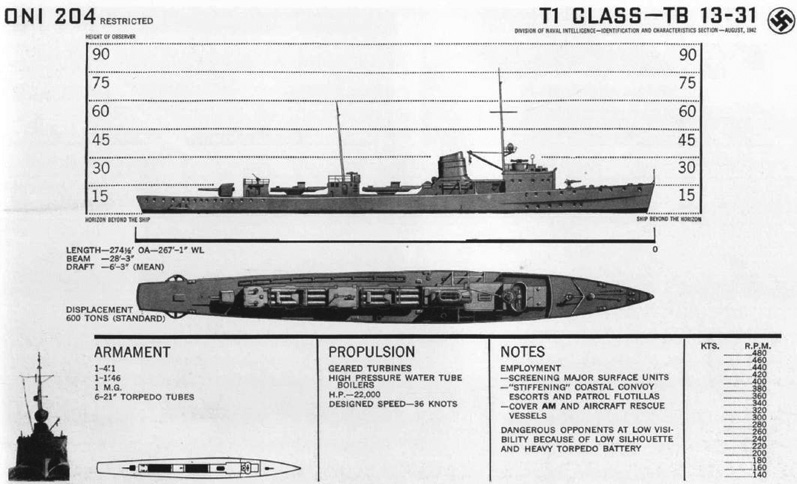
ONI appearance and specs
The Type 1935 TBs measured 84.3 meters (276 ft 7 in) overall, 82.2 meters (269 ft 8 in) at the waterline. But it was soon found in 1939-40 their weaworthiness was mediocre and so their bow was rebuilt in 1941 to remedy the problem. Their overall length was increased in the process with a new clipper bow, to 87.1 meters (285 ft 9 in) overall. Their beam was 8.62 meters (28 ft 3 in), and mean draft 2.83 meters (9 ft 3 in) when deeply loaded, on a standard displacement of 859 long tons (873 t) and 1,108 long tons (1,126 t) deep load. They had no armour protection whatosever but their hull was divided into 12 watertight compartments and fitted with a double bottom over 75% above the keel. Apart this, they had a typically German split transom stern.
Metacentric height was 0.74 meters (2.4 ft) which was satisfying, helped by low and relatively light armament and structures. They were considered excellent sea boats and quite agile, but suffered in heavy weather, ploughing heavily, which is why they were given soon a new bow at the first occasion thay could be drydocked. This was the occasion also to modify their boilers for those not modified previously. The crew reached 119 officers and sailors, but they only had two boats, yawls under davits abaft their funnel. The rest were inflated life rafts stored on the roof of the aft main gun, on top of the torpedo mounts and other places as well as at least four ready buoys.
The general design was indeed recalling in the great lines, an overscaled R-Boote: Flush deck hull and small structure forward with an enclosed and a generous open bridge, small structure supportng a simple fire control for the rear gun, a pole foremast supporting a searchlight platform and spotting top (later removed). There was a reduced aft mast on the structure in between the two torpedo tube banks, taking a large space amidship, and supporitong a second fire control telemeter. The main artillery was aft, with ther main gun on deck and a superfiring 37 mm AA gun. The idea was they would launched torpedoes and then withdraw, presenting their bow. This was thus for defensive fire only.
Powerplant
The Type 35s had two sets of Wagner geared steam turbines, the infamous, brand new models which drove two shafts, each ending with a single three-bladed 2.45–2.6-meter (8 ft – 8 ft 6 in) propeller. Steam provided by four Wagner water-tube boilers which also powered the Hipper class heavy cruisers and destroyers of the Kriegsmarine. They operated at a pressure of 70 kg/cm2 (6,865 kPa; 996 psi) and temperature of 460 °C (860 °F). The turbines were rated for 31,000 shaft horsepower (23,000 kW). Top speed was supposed to be superior to the 1920s Type 23/24 TBs, above 35 knots (65 km/h; 40 mph). For range, they carried a maximum of 191 metric tons (188 long tons) of fuel oil, which gave them 1,200 nautical miles (2,200 km; 1,400 mi) at 19 knots (35 km/h; 22 mph). This was their standard escort speed.
In April 1939, T3 and T7 suffered some 400 boiler tube failures when raising steam. This was so bad as a special commission was raised to investigate their Wagner high-pressure boilers. This was compounded by other such failures in the class in general. The investigation revealed that much more steam was required to operate the turbines and auxiliary machinery than anticipated. They also highlighted that circulation of boiler feedwater was inadequate and a new piping was required. This was all possible without changing the boilers, so good news for the Navy in a sense. Both T3 and T7 thus became the testbeds for these modifications to remedy such issues. It was the ported to all other ships in class, but despite of these, engine and boilers issues continued, albeit to a lesser degree, and they could enjoy a more stable service rate.
Armament
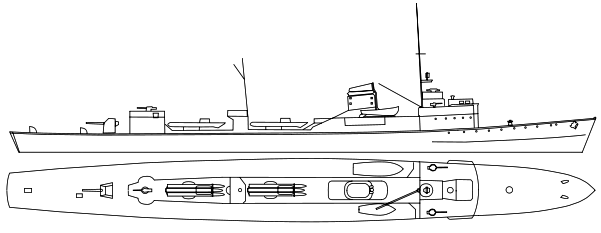
Right elevation (cc) showing their armament.
As said above, the Type 1935 were designed back in 1933 as torpedo boats, and speed was prioritize above all else….
10.5 cm/42 (4.1 in) SK C/32
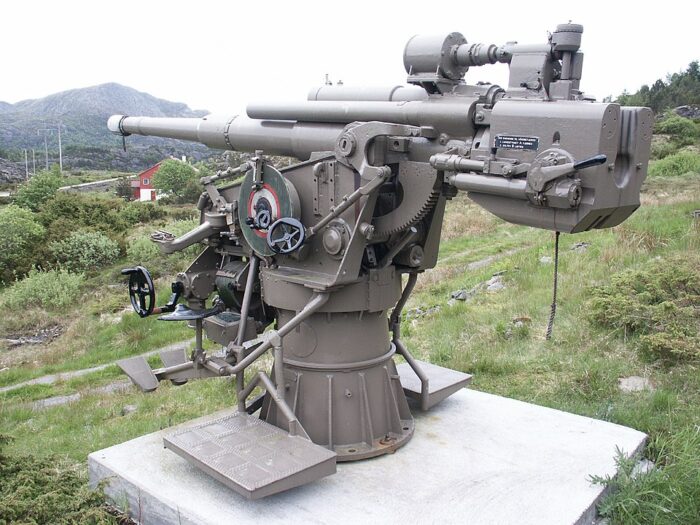
As built, the Type 1935 mounted a single 42-caliber 10.5 cm (4.1 in) SK C/32 gun on the aft deck.
Weight and size: 1,585–1,785 kgs (3,494–3,935 lb), 4.74–4.86 meters (15 ft 7 in – 15 ft 11 in)
Elevation: -10° to +50° on mount MPLC/32.
Shell: 15.1-kilogram (33 lb)
Muzzle velocity: 785 m/s (2,580 ft/s)
Range: 15,175 meters (16,596 yd) at 44.4°.
100 shells were provisioned.
3.7-cm FLAK C/30

Anti-aircraft defense was provided by a single 80-caliber 3.7 cm (1.5 in) SK C/30 anti-aircraft (AA) gun superfiring over the 10.5 cm gun. Hand-operated mount, superfiring over the 10.5 cm gun aft.
Maximum elevation: +80°
Ceiling: 6,800 metres (22,300 ft)
Range: 8,500 metres (9,300 yd)/35.7°.
Shell: 0.748-kilogram (1.65 lb)
Muzzle velocity: 1,000 m/s (3,300 ft/s)
Rate of fire: 30 rounds per minute.
2-cm FLAK C/30 (1931)

Two 2-cm (0.8 in) C/30 anti-aircraft guns were installed individual posts in the bridge wings forward. Each boat carried 2,000 rounds per gun
Weight and size: 450 kg (990 lb), 4.08 m (13 ft 5 in).
Rate of fire: 120 rounds per minute practical, 280 cyclic.
Shell: 0.12-kilogram (0.26 lb) HE, muzzle velocity 875 m/s (2,870 ft/s)
Ceiling: 3,700 meters (12,100 ft)
Range: 4,800 meters (5,200 yd).
533 cm (21 inches) TTs
As completed, the Type 1923 and 24 only had three main guns and two triple torpedo tube banks. These were the new 53 cm (21 in) torpedo tubes compatible with all interwar models and in constrast to the Type 1923-24 which had 50 cm tubes compatible only with WW1 models.
They likely fired the G7a torpedo:
G7a torpedo Specs
:
Weight: 3,369 lbs. (1,528 kg), Negative Buoyancy 605 lbs. (274 kg)
Dimensions: 23 ft. 7 in. (7.186 m)
Propulsion: Decahydronaphthalene (Decalin) Wet-Heater
Warhead: 617 lbs. (280 kg) Hexanite.
Guidance: Federapparattorpedo; 1944 Lagenunabhängiger Torpedo
Warhead: 300-kg (660 lb)
Speed/range settings: 14,000 m (15,000 yd)/30 knots; 8,000 m (8,700 yd)/40 kts; 6,000 m (6,600 yd)/44 knots.
Mines
 They could also carry now up to 50 mines, versus 30 on the Type 23/24. These were likely EMC Contact Mines, placed on trolley rails. Spherical mines, 44 inch (1.12 m) in diameter. Charge 661 lbs. (300 kg). 7 Hertz horns. Could be moored in 55, 109, 164 or 273 fathoms (100, 200, 300 or 500 m). First captured by the British in October 1939. more on navweaps
They could also carry now up to 50 mines, versus 30 on the Type 23/24. These were likely EMC Contact Mines, placed on trolley rails. Spherical mines, 44 inch (1.12 m) in diameter. Charge 661 lbs. (300 kg). 7 Hertz horns. Could be moored in 55, 109, 164 or 273 fathoms (100, 200, 300 or 500 m). First captured by the British in October 1939. more on navweaps
Upgrades (1941-44)
Many boats exchanged the 3.7 cm gun for two 2 cm gun, and depth charges and minesweeping paravanes were added before completion. Lateer in the war additions were limited to a radar, radar detectors and more light AA guns.
By April 1944, T1, T2, T3, and T4 lacked a radar still.
Sensors (1944)
FuMB Ant 4 “Sumatra”
FunkMessBeobachtung: Passive Radar detector. Broad-band diagonal antennas. 1943, broadband dipole. It has flat, drop-shaped branches mounted in front of a reflecting area. In order to receive horizontally as well as vertically polarized waves, the dipole is tilted. Its reception angle is +- 50 degrees. To be able to survey the whole area, the antennas of the Sumatra installation are mounted on all four sides of the ship.
FuMO 63
FunkMessOrtung. Active Radar. Could be detected. Small type, Hohentwiel-K.


T-1 as commissioned, with the standard livery, dark hull, light gray superstructures, number on bridge.
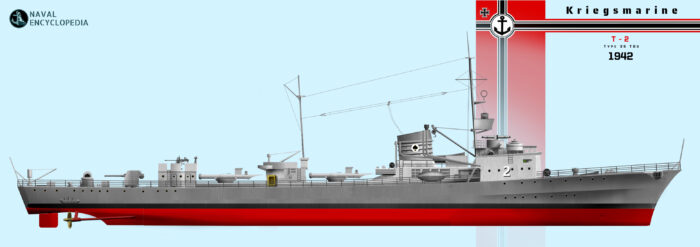
T2 in 1942, still early livery but later clipper bow

T8 in 1942, camouflaged
To come: T5 T9, T10, T11
⚙ Type 1935 specifications |
|
| Displacement | 959 long tons standard, 1,108 long tons deep load |
| Dimensions | 84.3 x 8.62 x 2.83m (276 ft 7 in x 28 ft 3 in x 9 ft 3 in) |
| Propulsion | 2 shafts GST 4x WT boilers 31,000 shp (23,000 kW) |
| Speed | 35 knots (65 km/h; 40 mph) |
| Range | 1,200 nmi (2,200 km; 1,400 mi) at 19 knots (34 km/h; 22 mph) |
| Armament | 1× 10.5 cm (4.1 in) guns, 1x 37mm, 2x 20mm, 2×3 500 mm (19.7 in) TTs, 60 mines |
| Crew | 119 |
Assessment
More so, the design was plagued by boilers issues to such a point that naval historian M. J. Whitley later stated “the whole concept, with the benefit of hindsight, must be considered a gross waste of men and materials, for these torpedo boats were rarely employed in their designed role.”. In all, twelve were built to replace older WWI units (T1-T12). The very last was commissioned on 4 july 1940. Nevertheless compared to previous ships they hhad one more boiler for more ouptut, better top speed, reduced crew and range.
They spent most their time escorting convoys and minelayers in North Sea, English Channel and later transferred to Norway trying to prey against shipping along the Scottish coast. Refitted in early 1941 they ended in the Baltic Sea to support operations from June. Four ended in reserve (manpower shortages) as well as in 1942, four were sent to France, escorting commerce raiders and later the “channel dash”. Two ended in the Torpedo School and the rest in 1943. Later in 1944 most were back in the Baltic. All in all, there were all sunk but three: T1 by aviation, 10 April 1945 as T2 (29 July 1944), T3 (19 September 1940), repaired, then mines, 14 March 1945, T4 (survived, Transferred US), T5 (mines 14 March 1945) T6 (same 7 November 1940), T7 (aircraft, 29 July 1944), T8 (same 3 May 1945), T9 (sunk 4 July 1940), T10 (aviation 19 December 1944), and T11 went UK and France, T12 to USSR, 1946.
Career of the Type 1935
 T1 (1938)
T1 (1938)
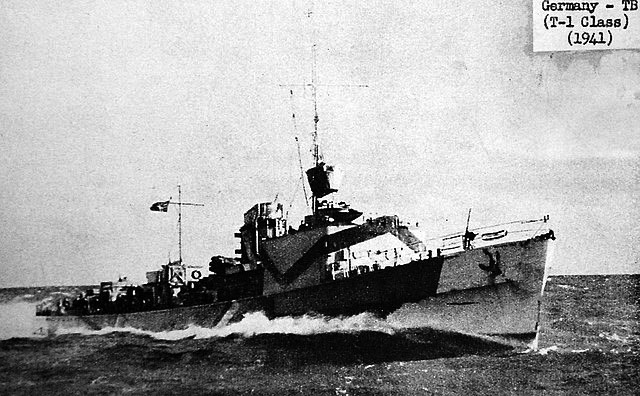
T-1 was laid down at Schichau, Elbing on 14 November 1936, launched 17 February 1938 and commissioned on 1 December 1939. Like her sisters she was plagued with mechanical problems delaying her service until September 1940. She escorted a minelaying mission in the Channel on 6–7 September in the 1st Torpedo Boat Flotilla (TBF) with T2, T3, Kondor. Later she joined Seeadler, T2, T3 to France, attacked underway by a British light bomber. T2 was damaged, returned to Germany for repairs. T1 returned home a few days later. In November she was transferred to Stavanger in Norway. She was signalled to attack a convoy expected at Kinnaird Head (Scotland) on 7 November and the 2 flotillas sailed on 6 November, passed through the British minefields and intercept and fell on the convoys at 02:00, but met extra, recent minefields further north. T6 sank. T7 and T8 rescued survivors, the operation was abandoned. T1 escorted KMS Kormoran in Norwegian waters in December 1940. She ran aground off Kristiansand on 22 January 1941, repaired at Horten, and Warnemünde, then Gotenhafen until July 1941. In reserve from 15 August until June 1942. Recommissioned, assigned to the Torpedo School. November 1943, long refit unyil March 1944. April, still in a training unit. Resumed convoy escort duties in the Baltic. On 14 August she was in the 2nd TBF (nine Type 35s). Damaged by Soviet air attack while docked in Libau 9 October. Escorted KMS Prinz Eugen in a counter-attack near Cranz, East Prussia 29–30 January 1945. She was refitting in Kiel by March, sank by bomb hits in a RAF night raid on 9 April (9 crewmen killed). BU 20 May 1946.
 T2 (1938)
T2 (1938)
T2 was laid down at Schichau, Elbing on 14 November 1936, launched on 7 April 1938, commissioned on 2 December 1939. She was still trained and working up by June 1940, assigned to the 5th TBF T2 with T7, T8, Kondor, Falke, Jaguar. They escorted minelayers in the SW North Sea 7–8 August, 14–15 August. Next she was in the 1st TBF for the Channel 6–7 September minelaying. She was ordered to France, attacked en route by Blenheim. A bomb fell at just 10 meters (33 ft) of T2 with the splinters badly damaging her, killin 6. She stopped in Vlissingen for emergency repairs and completed later at Wilhelmshaven from 25 September and Schichau until May 1941, still working up until July. She escorted convoys in the Skaggerak and with T5, T8, and T11, she took part in Operation Beowulf in mid-September. Sge was part of the escort of Tirpitz for a sortie into the Sea of Åland on 23–29 September. T2 wa slater in the decoy force. She was refitted in November. On 2 December with T12 she escorted KMS Thor in the Schillig Roads and through the Channel with three others TBs but due to heavy fog, they did not reach Brest before the 15th. On 12 February 1942, 2 and 3 TBF escorted Gneisenau, Scharnhorst and Prinz Eugen in the “Channel Dash”. Hergunners claimed a Swordsfish. Placed in reserve, ordered to France March 1943. Escoted the Italian blockade runner Himalaya through the Bay of Biscay, but forced to return due to heavy aerial attacks, 9–11 April. 5–8 May her unit laid three minefields in the Channel. T2 became flagship of the 25th U-boat Flotilla in July-September, then Torpedo School. On 29 July 1944 she was sunk by US bombers in Bremen. Refloated on 4 September she was towed to Swinemünde on 9 December, Elbing for repairs on 31 January 1945, the further west unrepaired in February and reported at Brunsbüttel in May, BU in Cuxhaven in 1946.
 T3 (1938)
T3 (1938)
T3 was laid down at Schichau, Elbing on 14 November 1936, launched on 23 June 1938, commissioned on 3 February 1940. She was working up until early August and joined 2nd TBF, escorting the oiler Dithmarschen to Norway. In the 5th TBF with T2, Jaguar, Falke, Greif, Kondor, Iltis, she escorted minelayers for their North Sea mission (14–15 August) and in the Channel. While in Le Havre on 18 September she was attack by the RAF and took a direct hit, capsizing with the loss of 9. She was refloated in 1941, towed to Germany for repairs, recommissioned on 12 December 1943 at Danzig but assigned to the Torpedo School. In 1943 she was sent to the 2nd TBF, Baltic Sea with T5, T9, T12, T13, T16 escorting Admiral Scheer and Prinz Eugen to bombard Soviet positions as part of the evacuation of Sworbe, Saaremaa on 20 and 24 November. She rammed and sank the Soviet submarine S-4 on 6 January 1945 when the latter surfaced 100 metres (110 yd) ahead of her while her machine gunners opened fire on S-4’s conning tower and reversed engines disentangle from her hull. S-4 sank bow first, and to make sure she dropped 20 depth charges. She was repaired in Gotenhafen and later escorted a convoy near Hela when hitting mines laid by L-21 on 14 March, and sank. 300 died when she sank, including many refugees.
 T4 (1938)
T4 (1938)
T4 was laid down at Schichau, Elbing on 29 December 1936 launched on 15 September 1938, commissionned on 27 May 1940. She working up until October, transferred to Norway for escort and in November based in Stavanger. Two allied coastal convoys were spotted, estimated to cross Kinnaird Head so the two TBFs departed on 6 November but ran into minefields (see above). T4 was refitted in February-September 1941. On 16 November with T7, T12 she left Copenhagen, Denmark to Cherbourg to meet the commerce raider Komet on the 25th and then Le Havre and fought British MTBs on the 28th between Boulogne and Dunkirk. In this night action, T12 accidentally hit T4 while her bridge was wrecjed by MTB AA fire. Many men inc. the captain were wounded. Her forward torpedo mount was hit by a dud flare as well, splinters wrecked the steam lines in No. 2 boiler room, she fell to 24 knots (44 km/h; 28 mph). Komet reached the Atlantic nevertheless. On 3 December T4, T7, T14 met the raider KMS Thor with T2 and T12 in the Schillig Roads, escorted through the Channel and arrived in Brest in heavy fog on the 15th, Thor reached the Atlantic.
She then took part in the Channel Dash, trading her damaged TT for a Flakvierling AA mount. On 12 February 1942 with the 2nd and 3rd TBF she met and escorted Gneisenau, Scharnhorst and Prinz Eugen. On 20–22 July still in the 3rd TBF (T4, T10, T13, T14) she laid two minefields in the Channel. Later she escorted Komet through the Channel, 13–14 October, when attacked by eight MTBs, sinking the raider, and nearly sinking T10. T4 was damaged by stray MG fire from Komet. After a refit at Wesermünde (January-May 1943) he was assigned to the Torpedo School, refitted March–June 1944, transferred to the Baltic, transferred to the 2nd TBF (T4, T1, T3 T8) but saw no further action. In November 1945 she was allocated to the US as war reparation but instead sold to Denmark on 18 June 1948 as MTB leader, never commissioned, BU 1950–1951.
 T5 (1937)
T5 (1937)
T5 was laid down at Deschimag, Bremen on 30 December 1936, launched on 22 November 1937 and completed on 23 January 1940. After working up she was transferred to the Skaggerak for convoy escort and on 25–28 July, escorted Gneisenau from Trondheim to Kiel for repairs. On 31 August she joined the 2nd TBF to escort minelayers in the North Sea and the Channel in early September and later in the Straits of Dover. In November she was transferred to Stavanger for a minelaying mission on 27/28 January 1941. In March-September she was in refit. She supported the invasion of Ösel, Dagö and Muhu in Operation Beowulf. She escorted Tirpitz, to the Sea of Åland (23–29 September) and playe a distraction force during the invasion of Dago. Next she was sent to France in January 1942, still 2nd TBF, and on 12 February she took part in the Channel Dash. She was later transferred to Norway and screened Tirpitz to intercept Convoy PQ 12, then the Admiral Scheer and oiler Dithmarschen from Trondheim to Narvik in May. Refitted in East Prussia in August-November she remained in escort dusties in the Baltic until March 1943, was transferred to France in April, and joined T2, T5, Kondor, T22 and T23 to escort out the Italian blockade runner Himalaya through the Bay of Biscay (air attacks, failure). On 5–8 May she laid three minefields in the Channel. From June-Jyly she escorted U-boats through the Bay. Back home she was overhauled at Wesermünde, transferred to the Torpedo School in October and refitted again in March-August 1944. Back in the 2nd TBF (T5, T3, T9, T12, T13, T16) she screened Admiral Scheer in the evacuation of Sworbe, Ösel on 23/24 November. But while near Hela she struck mines from L-21 on 14 March 1945 and sank (20 crew KiA).
 T6 (1937)
T6 (1937)
T6 was laid down at Deschimag, Bremen on 3 January 1937, launched on 16 December 1937 and completed on 30 April 1940. She was working up until July, then transferred to the Skaggerak for convoy escort and in August joined the 2nd TBF with T5, T7, T8, escorting minelayers to the WS North Sea, Channel and laid minefields herself on 8–9, 15–16 Sept. in the Straits of Dover. Transferred to Stavanger, sent in interception of the Kinnaird Head convoy expected on 7 November and after corssing known minefiueld, the two TBFs crossed an unknown, recent one. T6 as flagship of the 2nd TBF struck a mine after midnight, loosing both turbines and all power and starting while listing at 10 degree. Whe it was uncontrollable, the captain ordered to abandon ship and T7, T8 rescued the survivors, 48 men went down with her or were killed in the initial detonation and drown afterwards.
 T7 (1938)
T7 (1938)
T7 was laid down at Deschimag, Bremen on 20 August 1937, launched on 18 June 1938 and commissioned 20 December 1939. She worked up until July 1940 and started convoy escort duties, reassigned to the 5th TBF with T7, T2, T8, Kondor, Falke, Jaguar to escort minelayers to the North Sea, Channel, Straits of Dover. In November she was transferred to Stavanger and was part of the operation to Kinnaird Head, and rescued survivors of T6, operation abandoned. After a refit at Wesermünde (January-August 1941) she was assigned to the Baltic, escorting the cruisers KMS Leipzig and Emden in Operation Beowulf by September. She also escorted Tirpitz in the Sea of Åland on 23–29 September and was later partr of the diversion for the capture of Dagö. By November she left Copenhagen for Cherbourg, escorting Komet, then Le Havre but were the following night spotted and intercepted by MTB on 28 November underway to Dunkirk. T7 was machine-gunned by an MTBs (2 dead, 3 wounded). On 3 December she ercorted in the Schillig Roads, Channel and to Brest. Back to Germany on 17 December she started a long refit at Wesermünde, was transferred to Norway in April 1942, escorting Admiral Scheer and Dithmarschen from Trondheim to Narvik in May (Operation Rösselsprung), then Tirpitz and Admiral Hipper in July. Later she screened Lützow from Narvik to Trondheim. She was refitted in East Prussia in August–September, placed in reserve, recommissioned as Torpedo School ships in January 1943, refitted at Bremen in May 1944. She was sunk at anchor on 29 July 1944 in a US bomber raid, refloated on 25 October, never repaired, sunk again on 30 April 1945, scrapped 1947-1949.
 T8 (1938)
T8 (1938)
T8 was laid down at Deschimag, Bremen on 28 August 1937, launched on 10 August 1938 and completed on 8 October 1939. She worked out until August and was transferred to the 5th TBF with T2 and T7, Kondor, Falke, and Jaguar in escorted of minelayers (North Sea) and in August joined the 2nd TBF with T5, T6, T7 for anoher minelaying mission in the North Sea, Channel and Straits of Dover. Next Stavanger, part of the failed Kinnaird Head convoy interception. She had a refit at Stettin in January-June 1941 and later took part in Operation Beowulf in September. She escorted Tirpitz in the Sea of Åland, took part in the capture of Dagö in October but was in reserve by December. Recommissioned for the Torpedo School in July 1942 she was refitted at Elbing from October 1943 until January 1944. Assigned to the 2nd TBF she took part in the capture of Narvi in June with T10, T30 and Finnish forces. She damaged a Soviet patrol boat off Narva on 16 July, screened Lützow during the bombardment of Frauenburg on 8 February 1945. She was sunk by a RAF raid on 3 May in the Kieler Förde, scuttled on 10 December.
 T9 (1938)
T9 (1938)
T9 was laid down at Schichau on 24 November 1936, launched on 3 November 1938 and commissioned on 4 July 1940. She workup up until August and started convoy escorts in the Baltic, then in November transferred to Norway. She took part in the cancelled Kinnaird Head, covered a minelaying mission off Stavanger and started a refit in Kiel until July 1940, then reserve on 15 August, recommissioned in June 1942, worked up until August. On 15–19 with T12, Z23, she escorted minelayer Ulm from Kiel to Narvik and was transferred to France in November, escorting the Italian blockade runner Himalaya in the Bay of Biscay (turned back on 28 March 1943 under heavy Air atacks). She was refitted at Schichau May-August and transferred to the Torpedo School, then back to active service in mid-1944, 2nd TBF, Baltic (T9, T3, T5, T12, T13, T16). On the night of 23/24 November she escorted Admiral Scheer shelling Soviet positions(evacuation of Sworbe, Ösel). T9 was damaged by an air raid while berthed in Danzig on 8 March 1945 and finished off by the RAF on 3 May in the Kieler Förde, scuttled on 10 December.
 T10 (1939)
T10 (1939)
T10 was laid down at at Schichau on 24 November 1936, launched on 19 January 1939 and commissioned on 5 August 1940. She worked up until September and was in convoy escort duties, Baltic, transferred to Norway, part of the aborted Kinnaird Head raid, in refit in March-July (Kiel), in reserve on 15 August, recommissioned on 13 May 1942, to France, 3rd TBF (T10, T4, T13, T14). On 20–22 July she laid two minefields in the Channel as well as on 1–2 August. She escorted the oiler Ermland to the Atlantic via the Bay of Biscay on 8–11 August. Same with the commerce raider Komet on 13–14 October. They were intercepted by five escort destroyers and eight MTBs, sinking the raider and badly damaging damaged T10 (six hits, down to 8 knots, on fire, 11 killed, 11 wounded). In December, she was repaired and sent to reserve, recommissioned in May 1943, sent to Torpedo School and assigned to senior officer’s ship, 25th U-boat Flotilla, on 10 July, then back to Torpedo School in September. She had a refit in February-April 1944, and returned to active duty in the Baltic, 2nd TBF. She took part in the operation on the island of Narvi on 27/28 June with T8, T30, damaging a Soviet patrol boat off Narva on 16 July. T10 was damaged in a Soviet air raid on Libau on 28 November and again on 15 December, repaired in to Gotenhafen in a floating drydock which was badly damaged in an RAF raid on 18 December 1944. Her hull slowly flooded and reached a 20° list, down at the bows 10°. Ultimately the drydock broke in half and despte a salvage ship pumping out the water she sank early the following morning, never refloated and BU postwar.
 T11 (1939)
T11 (1939)
T11 was laid down at Deschimag on 1 July 1938, launched on 1 March 1939 and commissioned on 24 May 1940. She worked up until July, was transferred to the Skaggerak (convoy escort) and 11 September damaged by bomb splinters while in Cherbourg in a RAF raid, having many in her crew wounded. She returned to Germany in December, decommissioned for repairs until June 1941. Assigned to the Baltic Sea she took part in Operation Beowulf with T7, T8, Leipzig and Emden and later escorted Tirpitz into the Sea of Åland on 23–29 September. She was transferred to France in early 1942 and took part in the Channel Dash with extra AA. She was transferred to Norway later and escorted the damaged Prinz Eugen from Trondheim to Kiel on 16–18 May in Operation Zauberflote with T12, Z25, Z5. Placed in reserve until recommissioned in January 1943 she was sent to the Torpedo School in April and was refitted in mid-1944 to December, then assigned to the 3rd TBF, Baltic. On 2 April 1945, T11 was involved in a collision with R 256, east of Bornholm Island, later sunk by Soviet aircraft. She was stuck in oport, captured on V-Day and later allocated to the British by late 1945. The RN transferred her instead to France in February 1946. Renamed “Bir Hacheim” on 4 February she saw little service with the Marine Nationale, being placed in reserve, stricken on 8 October 1951 and BU.
 T12 (1939)
T12 (1939)
T12 was laid down at Deschimag on 20 August 1938, launched on 12 April 1939 and commissioned on 3 July 1940. She worked up until September and transferred to Norway, escorting a minelaying mission from Stavanger in two nights. She was refitted in Wesermünde March-September to cure her numerous issues like her other sisters. On 16 November with T4 and T7 she left Copenhagen, for Cherbourg to escort the commerce raider Komet. She was in Le Havre and waited for night to fall but the British had spotted them, they were intercepted by MTBs on the 28th between Boulogne and Dunkirk and a night melee occurred in which T12 accidentally hit T4 several times but ptotected Komet through the Channel and into the Atlantic. On 2 December she tried the same with KMS Thor in the Schillig Roads, delayed by heavy fog, and erached Brest on the 15th. T12 and T7 were back in Germany 17 December and she entered Kiel for a refit.
On the 12 February 1942 she was prepared and later took part in the Channel Dash. On 6 March she screened Tirpitz on her way to intercept Convoy PQ 12 and escorted the damaged Prinz Eugen to Kiel on 16–18 May, starting a refit upon arrival until August 1943. On 15–19 August she escorted minelayer Ulm to Narvik.
Sent in France in October she escorted the Italian blockade runner Himalaya (failed attempt) and was refitted in Kiel in May–August 1943, assigned to the Torpedo School from December until May 1944, then assigned to the 2nd Flotilla screening KMS Admiral Scheer in the evacuation of Sworbe, Ösel operation on 23/24 November. In January 1945 she escorted Prinz Eugen for a bombardment near Cranz in East Prussia. She surrendered in a Baltic port in May, and was allocated to the Soviets, recommissioned on 5 November in the red banner Baltic Fleet, handed over on 27 December but not fully commissioned before 1st January 1946. She was renamed Podvizhny on 13 February 1946, assigned to the North Baltic Fleet until 1949, but the crew lacked experience with her troublesome machinery and a main steam pipe exploded during exercises, killing several sailors. Repairs failed and she was mothballed until decommissioned on 8 April 1953, used as unpowered experimental vessel “Kit” on 30 December 1954, sunk in shallow water off Heinäsenmaa and Makarinsaari (Lake Ladoga) in a simulated nuclear testing in early 1959, stricken on 13 March, but her wreck was still there when examined in mid-1991, to check her radioactively. She was raised, towed, and later scuttled by a Leningrad Naval Base team.
Read More/Src
Books
Campbell, John (1985). Naval Weapons of World War II. Annapolis, Maryland: Naval Institute Press (NIP).
Friedman, Norman (2011). Naval Weapons of World War One: Guns, Torpedoes, Mines and ASW Weapons of All Nations.
Gröner, Erich (1990). German Warships 1815–1945. Vol. 1: Major Surface Warships. NIP
Haarr, Geirr H. (2010). The Battle for Norway – April–June 1940. Barnsley, UK: Seaforth Publishing.
Haarr, Geirr H. (2013). The Gathering Storm: The Naval War in Northern Europe September 1939 – April 1940. NIP
Haarr, Geirr H. (2009). The German Invasion of Norway, April 1940. NIP
Rohwer, Jürgen (2005). Chronology of the War at Sea 1939–1945: The Naval History of World War Two (Third Revised ed.). NIP
Sieche, Erwin (1980). “Germany”. In Chesneau, Roger (ed.). Conway’s All the World’s Fighting Ships 1922–1946.
Whitley, M. J. (2000). Destroyers of World War Two: An International Encyclopedia. London: Cassell & Co.
Whitley, M. J. (1991). German Destroyers of World War Two. NIP
Links
on navypedia.org/
avalanchepress.com/
german-navy.de/
german-navy.de/kriegsmarine/ torpedoboats T1935/
https://www.drivethrurpg.com/en/product/301644/german-torpedo-boats-type-1935-1937-1939
Model Kits
None ! Want one ? vote in the comments…



 Latest Facebook Entry -
Latest Facebook Entry -  X(Tweeter) Naval Encyclopedia's deck archive
X(Tweeter) Naval Encyclopedia's deck archive Instagram (@navalencyc)
Instagram (@navalencyc)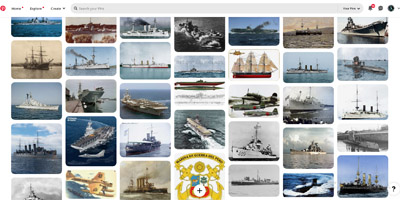

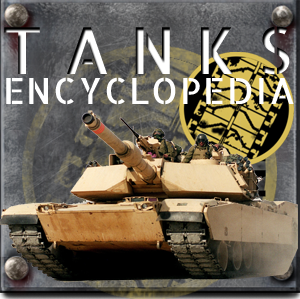
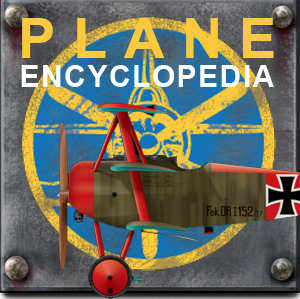
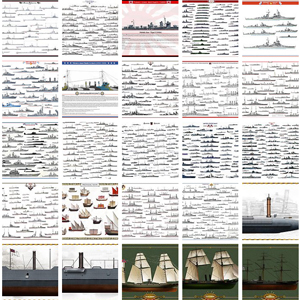
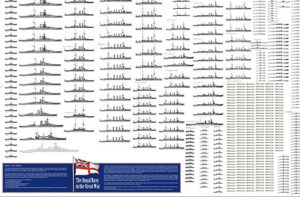
 French Navy
French Navy Royal Navy
Royal Navy Russian Navy
Russian Navy Armada Espanola
Armada Espanola Austrian Navy
Austrian Navy K.u.K. Kriegsmarine
K.u.K. Kriegsmarine Dansk Marine
Dansk Marine Nautiko Hellenon
Nautiko Hellenon Koninklije Marine 1870
Koninklije Marine 1870 Marinha do Brasil
Marinha do Brasil Osmanlı Donanması
Osmanlı Donanması Marina Do Peru
Marina Do Peru Marinha do Portugal
Marinha do Portugal Regia Marina 1870
Regia Marina 1870 Nihhon Kaigun 1870
Nihhon Kaigun 1870 Preußische Marine 1870
Preußische Marine 1870 Russkiy Flot 1870
Russkiy Flot 1870 Svenska marinen
Svenska marinen Søværnet
Søværnet Union Navy
Union Navy Confederate Navy
Confederate Navy Armada de Argentina
Armada de Argentina Imperial Chinese Navy
Imperial Chinese Navy Marinha do Portugal
Marinha do Portugal Mexico
Mexico Kaiserliche Marine
Kaiserliche Marine 1898 US Navy
1898 US Navy Sovietskiy Flot
Sovietskiy Flot Royal Canadian Navy
Royal Canadian Navy Royal Australian Navy
Royal Australian Navy RNZN Fleet
RNZN Fleet Chinese Navy 1937
Chinese Navy 1937 Kriegsmarine
Kriegsmarine Chilean Navy
Chilean Navy Danish Navy
Danish Navy Finnish Navy
Finnish Navy Hellenic Navy
Hellenic Navy Polish Navy
Polish Navy Romanian Navy
Romanian Navy Turkish Navy
Turkish Navy Royal Yugoslav Navy
Royal Yugoslav Navy Royal Thai Navy
Royal Thai Navy Minor Navies
Minor Navies Albania
Albania Austria
Austria Belgium
Belgium Columbia
Columbia Costa Rica
Costa Rica Cuba
Cuba Czechoslovakia
Czechoslovakia Dominican Republic
Dominican Republic Haiti
Haiti Hungary
Hungary Honduras
Honduras Estonia
Estonia Iceland
Iceland Eire
Eire Equador
Equador Iran
Iran Iraq
Iraq Latvia
Latvia Liberia
Liberia Lithuania
Lithuania Mandchukuo
Mandchukuo Morocco
Morocco Nicaragua
Nicaragua Persia
Persia San Salvador
San Salvador Sarawak
Sarawak Uruguay
Uruguay Venezuela
Venezuela Zanzibar
Zanzibar Warsaw Pact Navies
Warsaw Pact Navies Bulgaria
Bulgaria Hungary
Hungary

 Bundesmarine
Bundesmarine Dutch Navy
Dutch Navy Hellenic Navy
Hellenic Navy Marina Militare
Marina Militare Yugoslav Navy
Yugoslav Navy Chinese Navy
Chinese Navy Indian Navy
Indian Navy Indonesian Navy
Indonesian Navy JMSDF
JMSDF North Korean Navy
North Korean Navy Pakistani Navy
Pakistani Navy Philippines Navy
Philippines Navy ROKN
ROKN Rep. of Singapore Navy
Rep. of Singapore Navy Taiwanese Navy
Taiwanese Navy IDF Navy
IDF Navy Saudi Navy
Saudi Navy Royal New Zealand Navy
Royal New Zealand Navy Egyptian Navy
Egyptian Navy South African Navy
South African Navy






























 Ukrainian Navy
Ukrainian Navy dbodesign
dbodesign